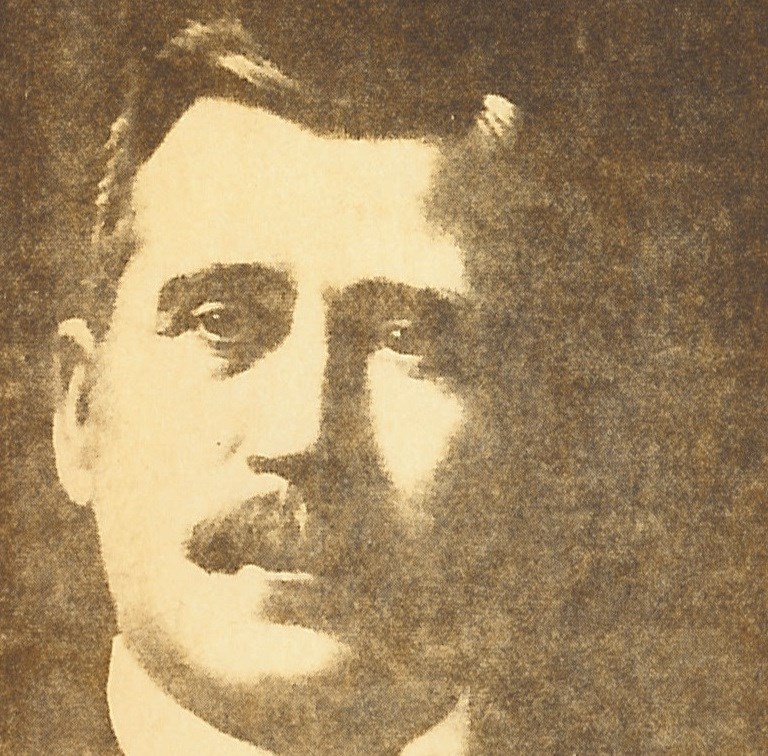From the archives of the Sault Ste. Marie Public Library:
*************************
Remember This: Sir William Howard Hearst - The Man Who Would Become Premier
Did you know that one of our own local politicians was Premier of Ontario?
William Howard Hearst was born in Arran Township on February 15, 1864.
The youngest son of Irish immigrants, he was one of ten children. He moved to Sault Ste. Marie in 1888 and established a law practice with John McKay, a fellow law student whom he had met in Owen Sound.
As he settled into his new community and law practice he became involved in community affairs and politics that would one day lead him to become Premier of Ontario.
In 1891, following the mass resignation of the original Fire Brigade William Hearst was elected chief of the new department.
His son recounted that after a night spent fighting a fire he would come home, change his clothes and head to his law office to put in a full day’s work.
He continued to fill the position of Fire Chief until December 1892.
Hearst was active in the Methodist Church serving as Sunday School Superintendent and was also on the building committee to erect a new church located at the corner of Albert and Spring Streets, later becoming known as Central United Church.
He built a home located on the corner of Queen Street and Upton Road named Eastbourne, a property that has since been designated as a heritage property in the city.
During the 1890s Sault Ste. Marie was described as having an atmosphere of adventure with the feeling of a western rather than an eastern town because of its unique position in the “wilderness” of Algoma.
This was a period of great development, particularly in the area of minerals and land deals.
Hearst’s love of politics had begun early and in 1890 he received unanimous support for the Conservative nomination for the riding of East Algoma but he declined, explaining that he did not have the money for a campaign.
At this point in history, MPs were not paid and their only compensation was free railway travel.
He was approached again in 1894 to run in the upcoming election and he made an unsuccessful bid for the Algoma seat.
He ran again in 1908 and this time he was elected to the Ontario Legislature.
In 1911, he became the Minister of Lands, Forests and Mines in the Conservative government led by Sir James Whitney.
This increase in responsibility led to moving his family to Toronto in 1912.
Originally he had hoped to continue his law practice in Sault Ste. Marie but found the time and distance forced him to suspend his practice for eight years.
His strong support of the north is reflected in his interest in opening up the great clay belt that ran from the Ottawa River to the shores of Lake Superior.
The town of Hearst located in this area was named after him.
William Hearst also did legal work for the Lake Superior Corporation and continued to be a strong supporter of the corporation explaining in a speech that he gave in 1912 that “LSC” employed about ten thousand men and paid out wages in excess of $6,000,000 a year.
He felt that this company illustrated the importance of such a business to both its community as well as to the entire province.
William Hearst served under Premier James Whitney for eight years and when the Premier died while in office, he left a political testament in which he named William Hearst as his successor, even though Hearst was one of the junior cabinet ministers.
William Hearst served as premier from 1914 to 1919, a very difficult period in the province’s history.
He was a strong supporter of the war effort and was knighted in 1917 becoming known as Sir William Hearst.
Due to the demands from First World War he enacted prohibition in 1916 in part because he felt that the liquor traffic was an unnecessary drain on resources – it consumed valuable grain, caused industrial production to decline and was a temptation for the soldiers.
He established a Department of Labour, establishing laws to compensate workers for injuries while on the job.
He authorized construction of the Queenston hydroelectric plant, establishing Ontario Hydro as the province’s primary producer of electricity.
His government also passed legislation to permit women the right to vote in provincial elections.
When his government was defeated in 1919 he returned to practicing law while continuing to serve on many boards and committees including the International Joint Commission, settling international boundary water disputes between the United States and Canada.
Although Hearst did not return to live here after his government’s defeat, he did continue to support and promote our city and Northern Ontario until his death on September 29, 1941. He is buried in Toronto.
In 2015, our local City Council passed a resolution declaring that the Civic Holiday in Sault Ste. Marie, celebrated on the first Monday in August would now become known as Sir William H. Hearst Day in recognition of his contributions to both our city and our province.
*************************
Each week, the Sault Ste. Marie Public Library and its Archives provides SooToday readers with a glimpse of the city’s past.
Find out more of what the Public Library has to offer at www.ssmpl.ca and look for more Remember This? columns here
